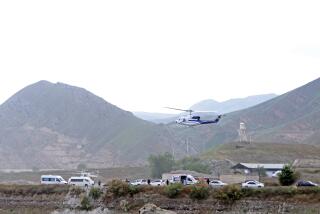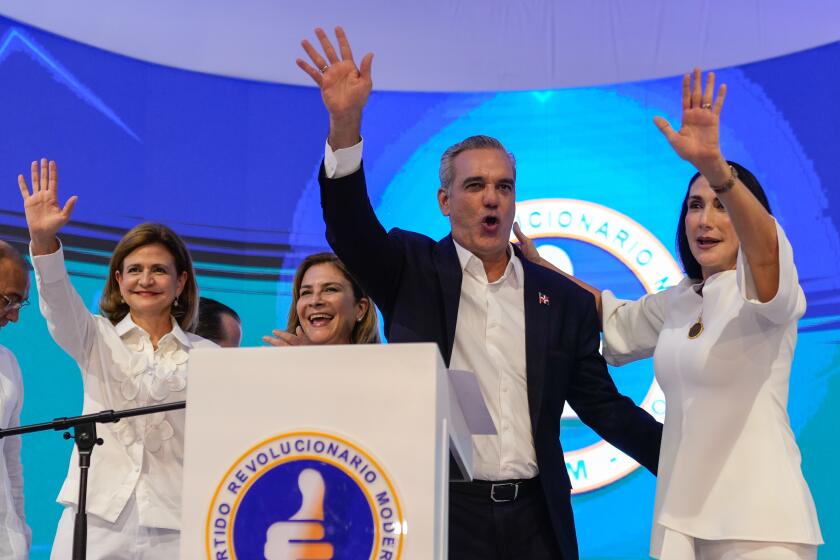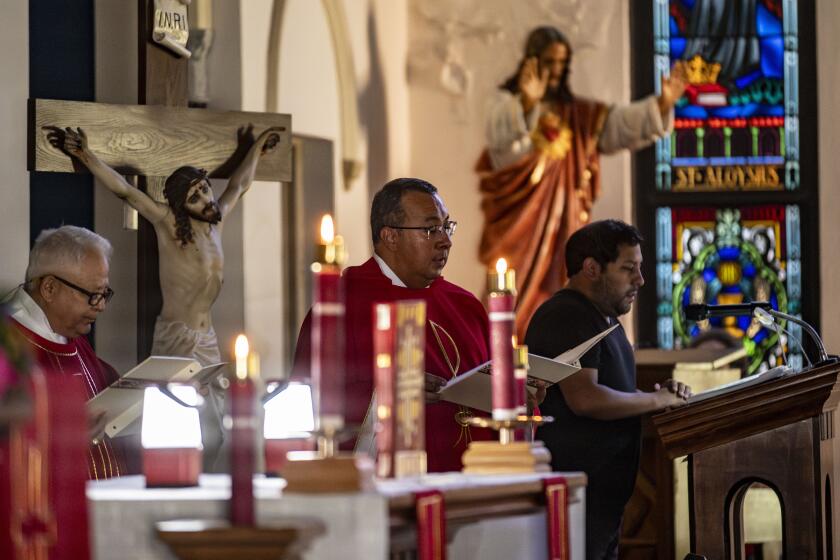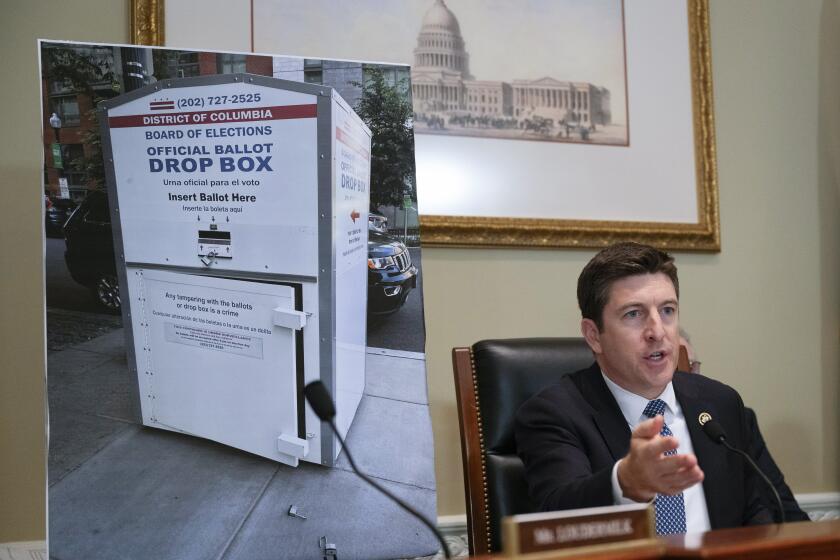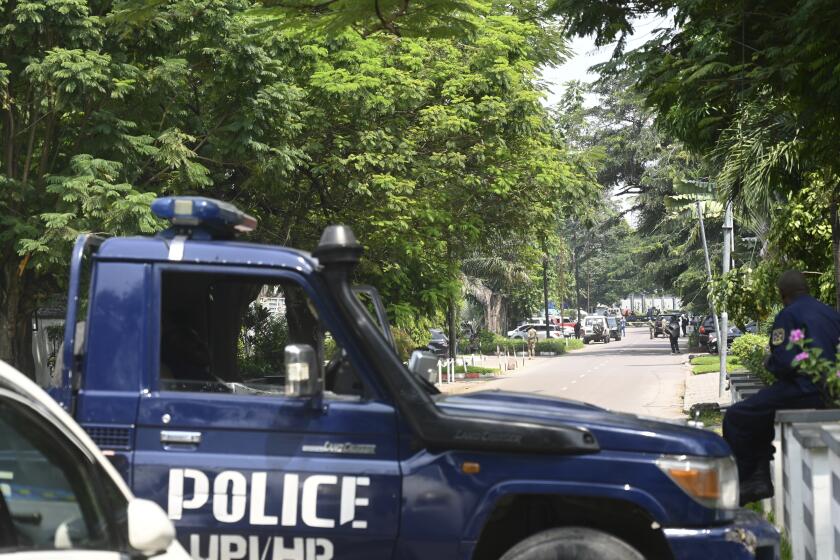U.S. Immigration Policy Frustrates Cubans : Caribbean: 1966 law makes it easier for islanders to gain admission to America as refugees than as legal immigrants or tourists.
Eight months of waiting, a struggle for a place on the 50-mile bus ride from Matanzas and a night in the open air--they all seemed worthwhile to Lety as she emerged from the U.S. Immigration office here one recent morning.
“I got my visa!” the 35-year-old housewife gleefully reported to one of the small knots of Cubans who gather around the small plaza behind the U.S. Interests Section, which serves as an embassy on this island that has no diplomatic relations with the United States.
But dozens of others who had waited longer and suffered more walked away disappointed that day. “Of 100 people who apply to go to the United States, fewer than 10 get visas,” claimed Gilda, who like most of the people interviewed would not give her last name. “That is why people get desperate and leave on rafts.”
While Gilda’s figures are exaggerated, her sentiments accurately reflect the frustrations felt by many Cubans.
Recent reports that the Cuban coast guard shot and killed people trying to escape the island--contained in a formal U.S. State Department complaint and denied by the government here--have called attention to a problem that has plagued people such as Lety and Gilda for years: Despite the loosening of travel restrictions by the Cuban government, it is still easier for Cubans to gain admission to the United States as refugees than as legal immigrants or even tourists.
A 1966 U.S. law grants Cubans--and only Cubans--the right to live in the United States permanently a year after arriving. All they have to do is get there.
“They are automatically considered refugees,” said Rafael Hernandez, head of the International Relations Department at the Center for American Studies here. “If they apply in Cuba, they have to go through the normal processes and the U.S. immigration service decides that most people are not refugees. . . . They are not leaving for political reasons but because of the economic situation.”
The number of people receiving immigrant visas to the United States while in Cuba has dropped in recent years, he notes. But the total number of Cuban refugees arriving in the United States has grown since 1989, when the breakup of the former Soviet Union, Cuba’s largest trading partner, set off an economic crisis here. The crisis has grown so bad that President Fidel Castro last week announced economic reforms that may stray from his vision of socialism--perhaps including the legalization of U.S. dollars and other foreign currencies.
Cubans say an incoherent American immigration policy is responsible for the refugee smuggling industry that has blossomed, financed by Cuban-Americans who pay $10,000 to $15,000 for each relative rescued from the island’s deteriorating economy.
The Cuban coast guard confiscated two smugglers’ speedboats in two incidents earlier this month, killing three people. “This puts lives in danger,” Hernandez said of the U.S. policy. “It encourages people to try their luck. Of every three people that leave on a raft, one arrives. The rest die at sea.”
U.S. and Cuban officials say they would like to solve the problem. But finding a solution is difficult when each side accuses the other of making political hay at the expense of potential immigrants.
There are some points of agreement between the two governments.
U.S. Immigration and Naturalization Service officials concede that the law making every Cuban refugee a permanent resident a year after arrival in the United States is unfair. “It discriminates for Cubans over and above every other nationality,” INS spokesman Duke Austin said.
American officials counter that Cuba shares the blame. “We have no avenue to return Cubans,” Austin said. “We have no option but to keep them.”
The last time the American and Cuban governments were able to reach an agreement on immigration was almost a decade ago, when the Cubans took back 2,746 citizens who had left in 1980 on the Mariel boat lift. The United States would like to deport 1,800 more, but Cuba has not agreed to accept them.
An official at another agency said that Cuba’s refusal to accept illegal immigrants encourages others to skip the paperwork in favor of riding a raft the 90 miles to Florida or jumping the fence into the U.S. naval base at Guantanamo.
In contrast, Cubans who apply to migrate to the United States while they are still in Cuba are treated like any other foreigner. Those who want to emigrate permanently need an invitation from a close relative in the United States. Unless that person is a U.S. citizen and either his parent or child, the potential immigrant goes on a waiting list, just like that for any other country. In April, the State Department was processing applications filed in January, 1984.
Those who just want to visit must apply for a visa, then wait for a certified letter advising them of an appointment for an interview on a weekday morning. Because gasoline shortages make travel precarious, people from outside the capital often arrive days in advance and sleep in the plaza near the U.S. Interests Section.
More to Read
Start your day right
Sign up for Essential California for news, features and recommendations from the L.A. Times and beyond in your inbox six days a week.
You may occasionally receive promotional content from the Los Angeles Times.
